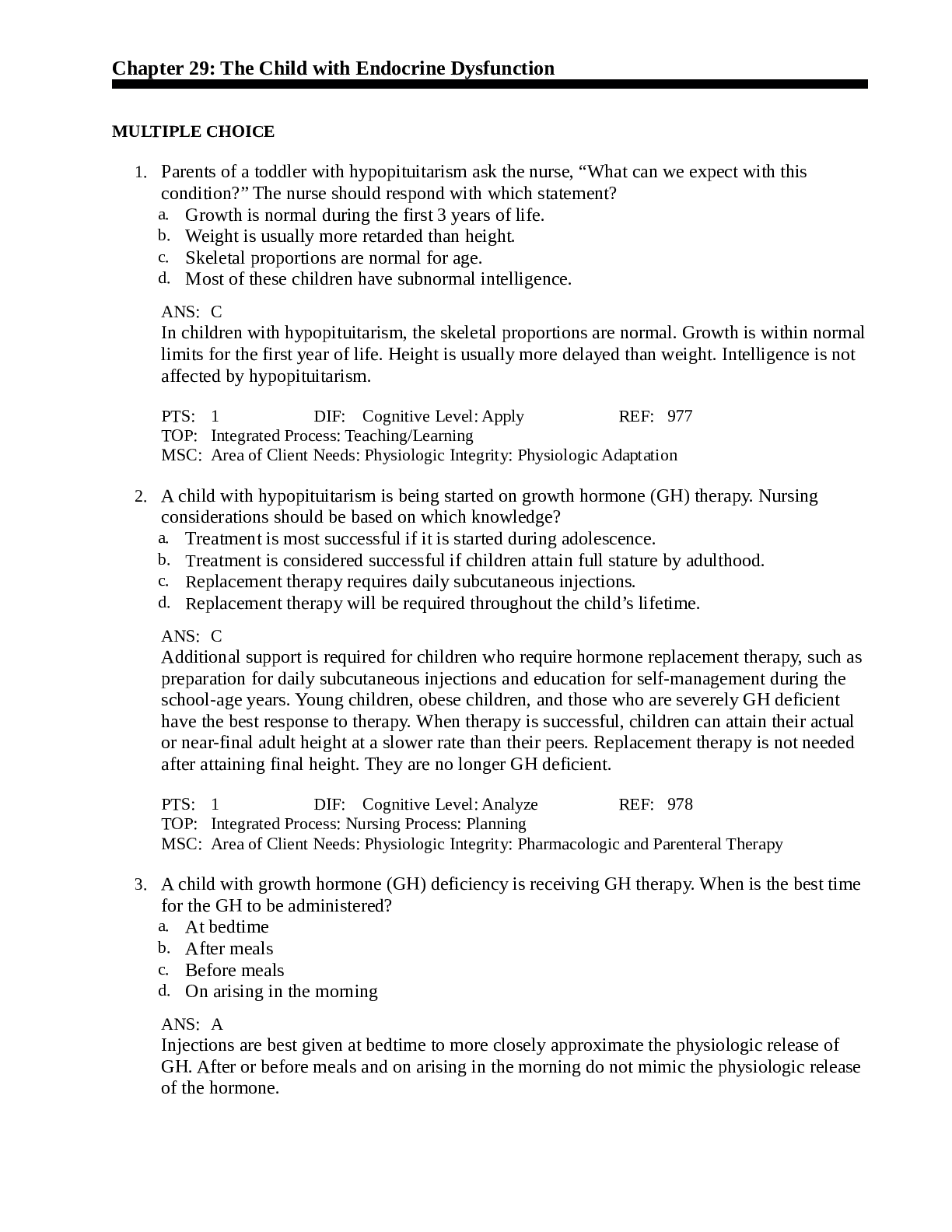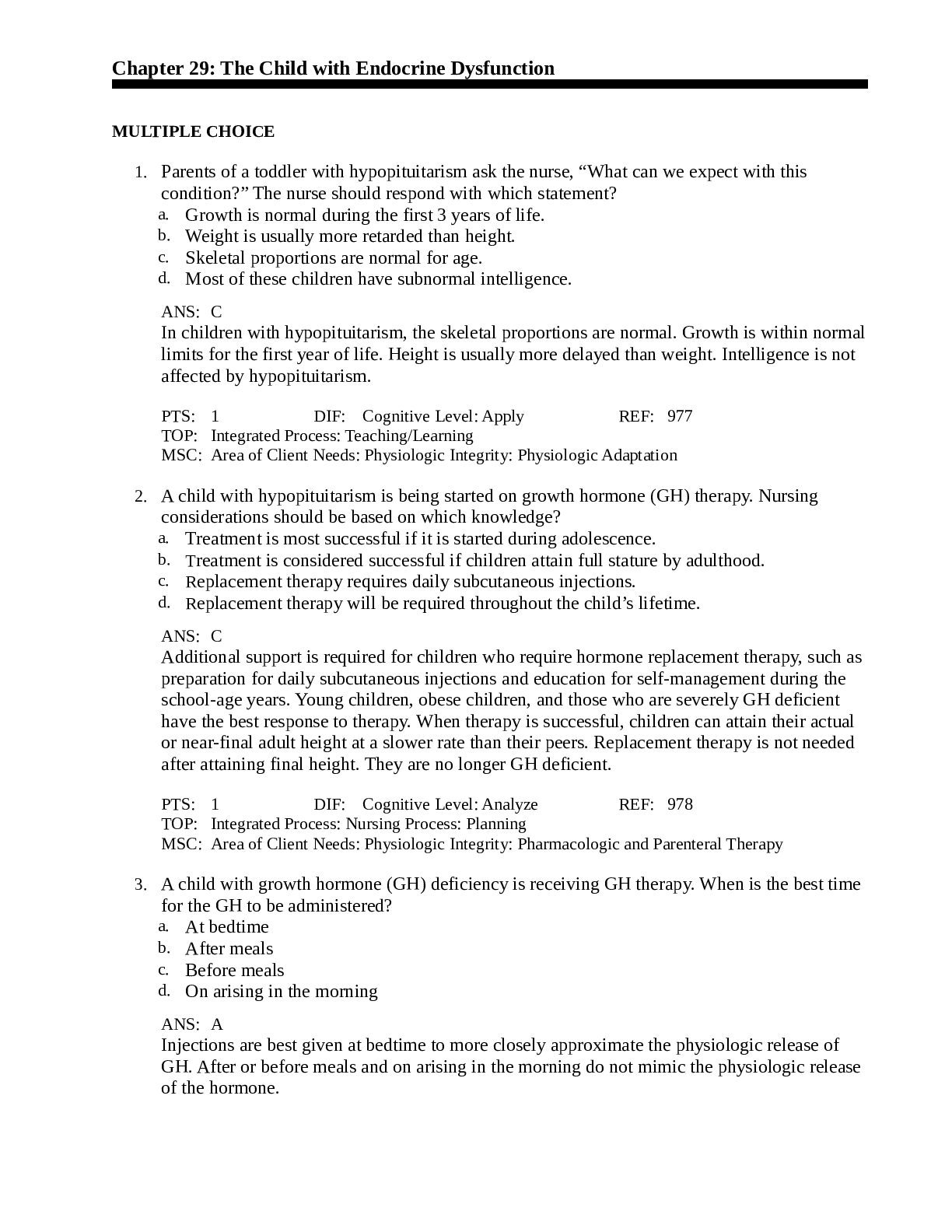The Child with Endocrine Dysfunction (Chapter 29)
Course
Project Management
Subject
Chemistry
Category
Questions and Answers
Pages
14
Uploaded By
ATIPROS
Preview 4 out of 14 Pages


Download all 14 pages for $ 7.50
Reviews (0)
$7.50
